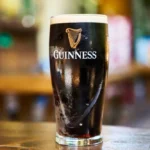
Multiplication, one of the four basic operations of arithmetic, gives the result of combining groups of equal sizes. The other ones being addition, subtraction and division. The result of a multiplication operation is called a “product”. It is often denoted by the cross symbol “×”, by the mid-line dot operator “⋅”, by juxtaposition, or, on computers, by an asterisk “*”.
In multiplication, the number being multiplied is called the multiplicand and the number by which it is being multiplied is called the multiplier.
The word “multiply” is from the Latin multus, meaning “multi” + plex, meaning “fold”—which, in turn, is from the Proto-Indo-European plek, which means “to plait.”
The product of any number multiplied by a ‘zero’ is zero.
In the answer to a 9’s multiplication fact, the 10s and 1s digits always add up to 9. For example, 9×4=36, so 3+6=9.
The product of any number multiplied by ‘one’ is equal to the number itself.
The Church of Multiplication is run by Benedictine Monks and is considered a significant area in Christianity.
In a multiplication operation, the product can be equal to the numbers being multiplied or greater than, but never the smaller, except when one of the number is zero.
The associative property of multiplication means that it doesn’t matter how numbers are grouped or which numbers are calculated first.
The product divided by the multiplicand equals the multiplier and the product divided by the multiplier equals the multiplicand.
The inverse of multiplication is division.
In multiplication operation, the change in the order of the numbers being multiplied does not change the product.
When multiplying an even number by 6, the product ends in the same digit as the even number. For example, 6×2=12, 6×4=24, 6×6=36, etc.
In 493 AD, Victorius of Aquitaine wrote a 98-column multiplication table which gave (in Roman numerals) the product of every number from 2 to 50 times and the rows were “a list of numbers starting with one thousand, descending by hundreds to one hundred, then descending by tens to ten, then by ones to one, and then the fractions down to 1/144.”
The Babylonians were the first to use multiplication tables over 4,000 years ago, their tables were based on base 60.
In his 1820 book The Philosophy of Arithmetic, mathematician John Leslie published a multiplication table up to 99 × 99, which allows numbers to be multiplied in pairs of digits at a time.
The oldest known tables using base 10 (similar to modern mathematics) were the Chinese, dating to about 305 B.C.
The Chinese multiplication table consists of eighty-one sentences with four or five Chinese characters per sentence, making it easy for children to learn by heart.
Multiplication tables are also called the “Table of Pythagoras,” after Pythagoras of Samos, the famous Ionian Greek philosopher and mathematician.
A bundle of 21 bamboo slips dated 305 BC in the Warring States period in the Tsinghua Bamboo Slips collection is the world’s earliest known example of a decimal multiplication table.
Multiply 1,089 X 9, and you get the exact reverse: 9,801.
The decimal multiplication table was traditionally taught as an essential part of elementary arithmetic around the world, as it lays the foundation for arithmetic operations with base-ten numbers. Many educators believe it is necessary to memorize the table up to 9 × 9.







